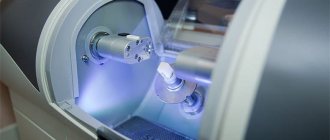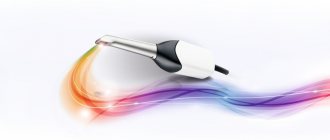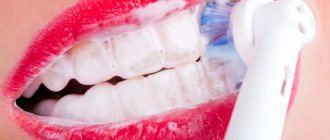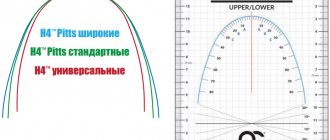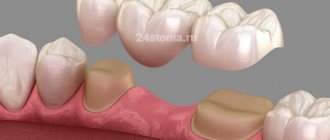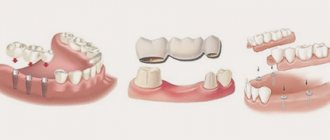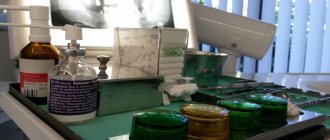If the dentist asks the patient: “What kind of filling are we going to put in?” - then the patient will find himself in a difficult situation, because usually he has a very poor idea of not only the composition of a dental filling, but also the differences between different types of fillings. To have an idea of how caries is treated and what results to expect from it in the future, it will be useful to learn about the different types and compositions of filling materials.
Cements
Cement fillings come in several types, depending on the composition of the material:
- silicate;
- silicophosphate;
- phosphate;
- glass ionomer.
The first three groups are rather fragile cements, low resistance to abrasion and characterized by not very reliable fixation in the carious cavity. They were installed everywhere in the past, but today such materials are considered obsolete and are used extremely rarely. It is advisable to use them only in the treatment of primary teeth, when special durability of the restoration is not required, but ease of installation and low cost are important.
Glass ionomer cements are a new generation of filling agents, since in this case the tooth filling contains components that can release fluoride and thereby prevent the development of secondary caries. This cement has a high chemical affinity for natural dental tissues and good marginal adhesion. However, glass ionomers have not completely eliminated all the disadvantages of cements, such as low strength, which is why they are also recommended for use mainly in pediatric dentistry. Such fillings are also suitable for treating children because they are relatively inexpensive and can be given different color shades - and colored fillings have become especially popular lately.
Composition and application of silicophosphate cements
The consistency of fillings based on zinc oxide enriched with silicate glass is a dough-like mass. Prepare within 4 minutes. They harden in 5–7 minutes, but this process can be slowed down so that the dentist has time to distribute the material well throughout the tooth tissues.
The shares of the main components (silicate and phosphate cements) in the formula of silicophosphate materials can be distributed differently. The composition may contain up to 90% silicates and up to 40% phosphates (the second part is leveled based on the standard maximum of 100%).
The scope of application of silicophosphate fillings is quite wide. They are often recommended for treatment on a limited budget:
- carious area located on the posterior (non-vestibular) side, when fillings are required on the front part of the dentition;
- small cavities of (pre)molars;
- filling teeth that are planned to be subsequently replaced with prosthetics (silicophosphate cements are also used to secure crowns).
Plastics and composites
An extensive group that includes:
- Acrylic-containing plastics. They are resistant to abrasion, but at the same time porous and quite toxic, so they have been used less and less in recent years.
- Composites with epoxy resins (chemically cured). Slightly better than plastic, but quite fragile and darken a few years after installation.
- Light-curing composites (photopolymers). Strong, reliable and durable. They polymerize and harden under the influence of ultraviolet radiation. The composition of a photopolymer tooth filling includes porcelain, which gives the material strength and aesthetics. The most popular option today.
Properties
Silidont is a filling material belonging to the silicophosphate group. Available in powder form, consisting of 20% phosphate (visphate) and 80% silicate (silicin) cement. It is intended for filling carious cavities:
- in children on temporary teeth (premolars) with carious cavities of class I, II, V;
- in adults on permanent molars and premolars with carious cavities of class I, II, V.
For permanent teeth, before filling, it is necessary to make a spacer that will isolate the pulp.
Silidont is available in the form of a container with powder; liquid orthophosphoric (H3PO4) acid is added to it in a glass jar for mixing.
Silidont-2 is used to fill any carious cavities in all teeth, except those that do not extend to the labial and buccal surfaces. Available in powder form in a 50 g plastic jar, in 3 colors (from light yellow, yellow-gray to light yellow-gray) and 30 g. glass bottle with liquid for mixing it.
Silicophosphate cement Silidont is used for filling permanent, temporary chewing and anterior teeth and their contact surface. Medium and deep caries are filled with this product only when an insulating lining is created.
Metals
Metal filling materials belong to the class of amalgams - alloys of various metals with mercury. Usually, upon learning that a dental filling contains mercury, the patient begins to fear its toxic effects. In fact, although there are many publications about the dangers of amalgams, the harm from them is much less than, for example, from smoking - a smoker receives more mercury from cigarette smoke than can, in principle, be released from a filling.
These are extremely strong and durable filling bases that can last for decades. Their main disadvantages are their unaesthetic appearance (they can only be installed on chewing teeth, which are not visible to others), a long curing period (2-3 hours) and difficulties in installation. The difficulty of installation lies in the fact that when hardening the material slightly increases in volume and, if the dentist does not calculate correctly, it can break the tooth wall.
Usually, when choosing, the patient pays special attention to cost. In fact, it is necessary to take into account both the service life and the “behavior” of the material in the mouth. After all, if you install a cement restoration and then change it every year, in the end the treatment will cost much more than installing a photopolymer.
Advantages of SFC
When compared with earlier solutions - fillings based on phosphates and silicates - then silicophosphate materials have a number of advantages:
- they are very easy to use;
- provide sufficient strength at the level of durable temporary fillings;
- more aesthetic than phosphates;
- less irritating to the pulp than silicate fillings;
- silicophosphate cements are less susceptible to being washed out by saliva than phosphate and silicate analogues;
- Due to the release of fluoride, silicophosphate cements prevent secondary carious lesions;
- This is an inexpensive treatment option.
Disadvantages of silicophosphate filling
But when compared with the characteristics of more modern types of fillings, silicophosphate materials lose out. In particular, they are not selected in accordance with the color of the dental wall to which they are “fitted.”
In terms of the quality of adhesion, silicophosphate cements are much inferior to the so-called light fillings - they adhere weakly to the edges and decrease in volume over time, opening access to microorganisms. Due to rapid hardening, it is not always possible to distribute them correctly.
The rough surface of hardened silicophosphate fillings is not very pleasant to the tongue (polishing will not make it smooth). Plus, with these fillings the issue of phosphoric acid is not resolved - it is released, destroying the pulp tissue. Therefore, a protective gasket is always installed under silicophosphate fillings.
In terms of biocompatibility, silicophosphate cements are also inferior to most “fresh” alternatives. The same applies to mechanical strength - it is higher than that of silicates and phosphates, but lower than that of most non-cement fillings.
Silidont-2 - silicophosphate filling cement - 50 g + 30 g (Polymer-Dentistry)
at room temperature
All product characteristics
St. Petersburg: free from 3000 ₽
in Russia: free from 30,000 ₽
Krasnodar: free from 5,000 ₽
Rostov-on-Don: free from 6,000 ₽
- Description
- Characteristics
- Reviews (0)
- Delivery
Silidont-2 – Polymer-Dentistry LLC
Silidont-2 is a dental material used for restoration of lateral and anterior teeth at contact points, excluding the vestibular area. When treating medium and deep caries, it is recommended to apply an insulating pad.
The material is characterized by good physical and mechanical strength, does not lose properties and does not deform when exposed to chemicals. Available in the form of aluminofluorosilicate glass powder and phosphoric acid-based liquid.
To prepare a cement mixture, it is necessary to mix the powder and liquid at room temperature (up to 23 ° C). For this, a special plate and spatula are used. The material consumption is calculated as follows: for three measured doses of powder there are 3-4 drops of liquid. If the finished paste turns out to be too thick, liquid cannot be added, but a new batch of cement must be prepared. The filling is formed using Silidont-2 within one minute, and the composition hardens in the mouth within 5 minutes.
Source
How to use
To mix a mixture of liquid and cement, the surface should be prepared; it should be:
You also need a spatula made of plastic or stainless steel.
In this case, it is necessary to maintain the temperature in the room from 18°C to 21°C.
- For one scoop of powder (0.22 g) two drops of liquid (0.11 g).
- Pour half a measuring spoon onto the surface and add all the liquid.
- Stir thoroughly with a spatula and gradually add the second part of the powder.
Mixing should take place for 1 minute. The cement must be quickly mixed to a homogeneous gel-like mass. You can check the quality of the prepared material using a spatula - the composition should stretch behind it.
If the room temperature is more than 22°C, the dental surface must be cooled in water for 2-3 minutes.
Indications, contraindications, side effects
Indications for use of Silidont:
- Filling of permanent and temporary teeth of molars and premolars in children.
- Filling in adult small and large molars, superficial type of caries, medium and deep, in the presence of isolation with other cement (containing zinc, phosphate).
- Fixation of fixed dentures.
Contraindications to the use of the composition are individual intolerance, allergy to one of the chemicals.
Side effects may occur due to non-compliance with the rules of mixing and applying the composition:
Dental sealants in pediatric dentistry
An effective method of preventing the development of caries from the age of 4 years is the installation of sealants. Due to the child’s lack of necessary hygienic skills, quite severe damage to tooth tissue by the carious process is possible. The sealant can be installed already in case of complete eruption of the chewing surface of the tooth. Installation of sealant in adults is used with no less frequency. Before installation, consultation with a dentist is required.
Sealants are classified according to their depth of occurrence as follows:
- medium-deep ones occupy a volume of up to half the thickness of the enamel;
- deep ones pass almost the entire enamel, not reaching dentin at the level of 150 microns;
- complete reach dentin.
Modern technologies allow dental sealants to have the following qualities:
- high abrasion and compression strength;
- high adhesive resistance to hard tooth tissue;
- color stability and absence of tooth staining;
- ability to harden in a humid environment at a temperature of 18-20 C for 3 minutes;
- ease of use.


